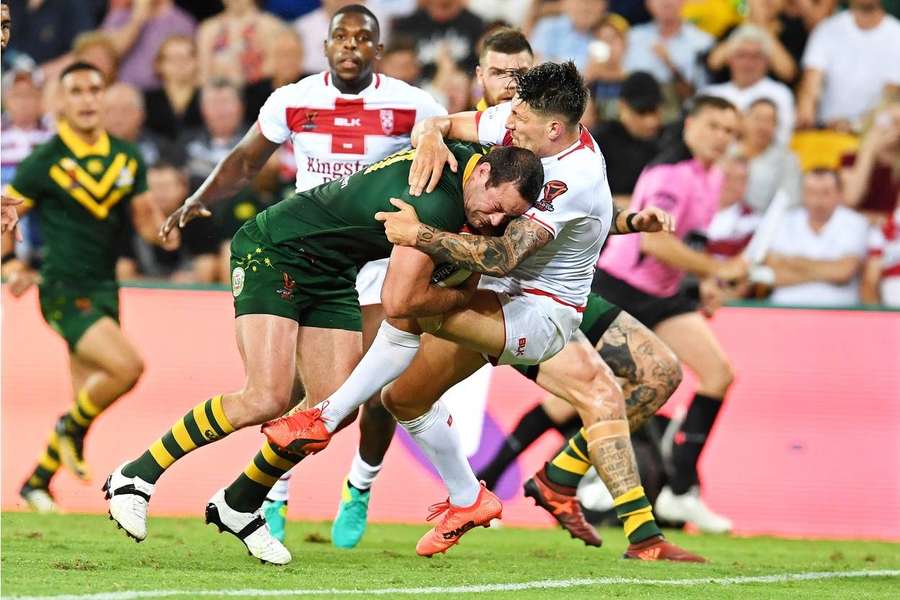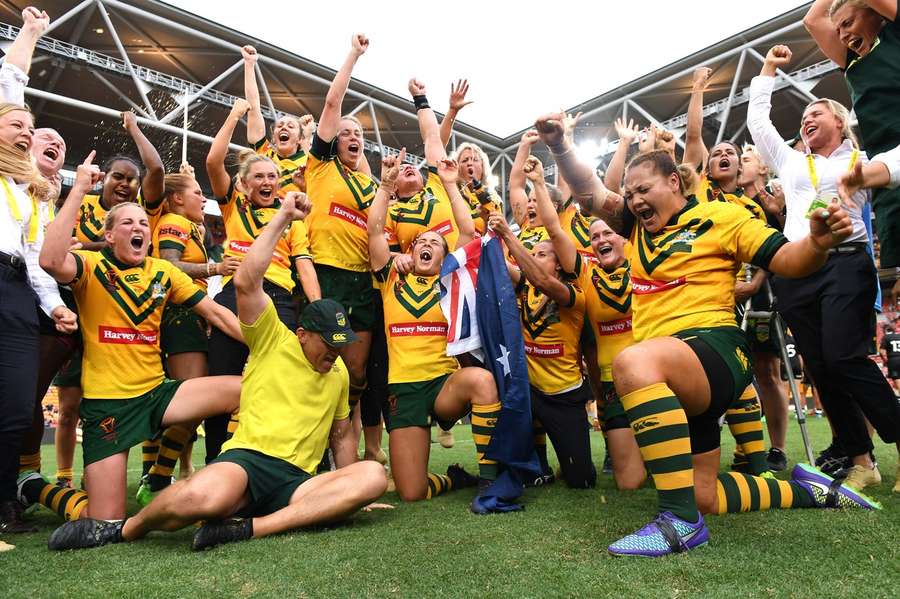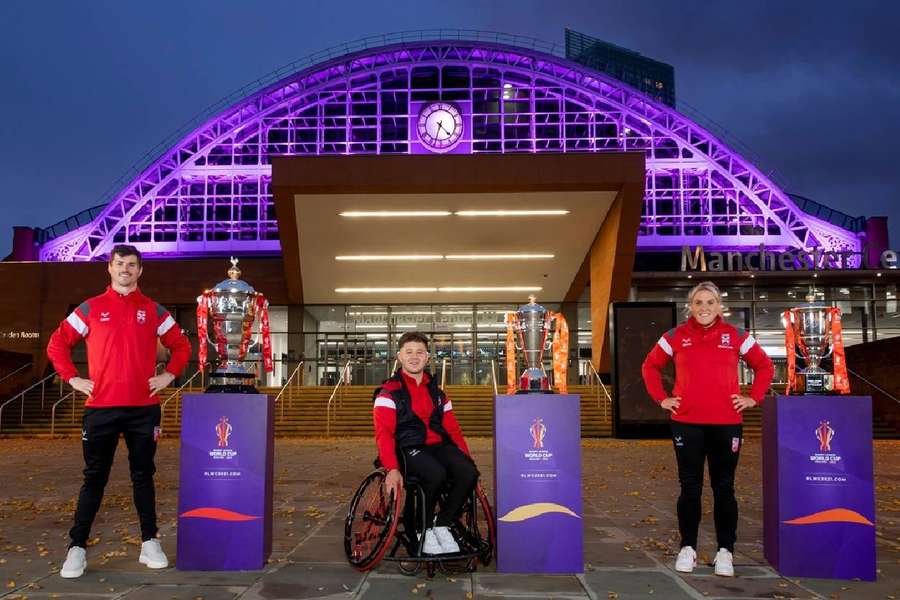This 16th edition of the Rugby League World Cup, hosted by England, was originally scheduled to be staged last year but was postponed due to COVID-19 resulting in the withdrawals of key nations Australia and New Zealand.
While the tournament has been held since 1954, it is only since 2013 that the tournament became an officially four-year event - being held at irregular intervals previously.
This year, not for the first time, the men’s World Cup will be staged concurrently with the women’s. And, in a fantastic new development, the Wheelchair Rugby League World Cup will also be staged simultaneously.
In another huge first, all three tournaments will involve financial parity, with every participant across the events being paid the same. All 61 matches during the three tournaments will be broadcast live.
The tournaments are being held in venues all around England, mostly condensed in the north of the country. The men’s and women’s finals will be staged as a doubleheader in Manchester at Old Trafford on November 19th.
Men’s Tournament
The men’s tournament is the main attraction and it sees the best 16 nations facing off in a group stage followed by a knockout structure.
All eight quarterfinalists from the 2017 World Cup, including reigning Champions Australia and 2017 runners-up England, qualified automatically. The other eight spots were granted through regional qualifiers.
Aside from Australia, the other mainstays at previous World Cups have historically been New Zealand, France and Great Britain. Australia, New Zealand and Great Britain are the only three nations to have ever won a World Cup - the Kangaroos are clearly dominant historically, winning 11 or the 15 World Cups that have been held.
It should be noted, Great Britain are no longer present in international Rugby League and are instead represented by England, Wales, Scotland and Ireland, individually.
Hosts England will be one of the tournament's better sides alongside the antipodean heavyweights of Australia and New Zealand. Don't be fooled by Australia’s world ranking of fourth, Mal Meninga’s team will still be going in firmly as favourites to lift the trophy again.

Australia’s dominance has long been an issue for international Rugby League’s relevance and viability as a product. The Australian league, the NRL, is by far the world’s premier Rugby League competition and tends to dwarf the World Cup in terms of its coverage.
The recently held NRL Grand Final and Australia’s quasi-all-star event, the annual State of Origin series, are arguably bigger events in the Rugby League calendar such is Australia’s historical talent monopoly on the sport, whose origins rather lie in the industrial hubs of the north of England. However, the emergence of competition from surprising quarters has made the World Cup a more interesting event over time.
Keep an eye out for Tonga, in particular at this year’s tournament. At the last World Cup, they made a real splash, beating New Zealand in the group stage and making it to the semi-finals where they narrowly lost to England. They have climbed up the world rankings to second place, behind the hosts in first.
The whole Tongan squad is made up of players from the NRL, almost all of who were born in either Australia or New Zealand. Before the 2017 World Cup, two of their key players Jason Taumalolo (born in Aukland) and Andrew Fifita (born in Sydney) defected from their countries of birth to opt for Tonga despite having already been capped by New Zealand and Australia respectively.
The Tongan team went on to beat Australia (16-12) in November 2019 in the Oceania Cup in what was considered one of the greatest upsets in Rugby League history and the first time Australia had lost to a tier two nation since 1978.
The momentum they have drawn from their recent successes and the spirit they have seemed to generate in the tiny island nation sets them up well to haunt the big three of Rugby League (Australia, England and New Zealand) once again.
Tonga aren't the only team to draw a large contingent of its squad from elsewhere. Samoa, another strong side, are similarly mostly made up of players born in Australia or New Zealand who play in the NRL.
Greece, who have qualified for the tournament for the first time, are mainly composed of Greek Australians, unsurprisingly, due to the large Greek diaspora community there. A similar story can be told of Italy and Lebanon.
The Lebanese team, known as the Cedars after their national tree, will be making their third World Cup appearance after reaching the quarterfinals last time out. They have a squad packed full of Lebanese-descent Australians who were largely bred in the great southern heartland of Rugby League, Sydney’s western suburbs, home to a large Lebanese community. Interestingly, they are coached by Michael Cheika (also a Lebanese Australian) who you may know as the former Wallabies coach and current coach of the Argentina Rugby Union team.
This year’s tournament sees an expansion from 14 to 16 teams and a couple of newcomers in tournament debutants Greece and Jamaica. The group stage will start on the 15th of October when England play Samoa at St James’ Park in Newcastle and will run until the end of the month.
The four group winners and runners-up will progress to the quarterfinals, which are followed by semi-finals and then the final on the 19th of November in Manchester.
Women’s Tournament
The women’s World Cup will be the sixth staging of the event and while it has often been held in cooperation with the men's World Cup since the first edition in 2000, this is the first time that there will be parity pay for the female and male players across both events.
The women's tournament has been expanded from six to eight nations in this edition and features debutants Brazil in their first World cup appearance. It kicks off a little later than the men’s tournament on the 1st of November with England taking on Brazil in Leeds.
After the round-robin group stage (two pools of four), the top two teams from each pool will progress to the semi-finals. The final, as mentioned, will be held on the 19th of November in a doubleheader with the men’s final in Manchester.
Australia and New Zealand have dominated the history of women’s Rugby League and have won all five previous tournaments between them. New Zealand won the first three and Australia the last two.
They will go into this year's tournament as the two favourites, being the first (Australia) and second (New Zealand) ranked teams in the world. However, both of them have been drawn in the same pool, giving hosts England an easier time of it, at least to begin with.

Wheelchair Tournament
Perhaps the most interesting new development of the Rugby League World Cup event package is the incorporation of a Wheelchair Rugby League World Cup.
In a major boost for this version of the game, it will be the first time the Wheelchair Rugby League competition has taken place concurrently with the men's and women's tournaments. The competition will also be the first time that participants in the tournament will receive the same fees as players in the other competitions and the first time that prize money will be awarded.
Eight nations will participate in the tournament which is similarly comprised of a round-robin group stage (two pools of four), followed by semi-finals and a final. The competition will start on the 3rd of November and the final will be on the 18th in Manchester.
It will be the fourth edition of the Wheelchair Rugby League World Cup to date. France are the defending champions and have won the last two tournaments in 2017 and 2013.
In the same way that Rugby League differs from Rugby Union in many ways, Wheelchair Rugby League is also similar but recognisably different from the much more widely known Paralympic sport of Wheelchair Rugby.
It is played on an indoor court (46m X 20m) and is a five-a-side version of Rugby League played in wheelchairs. 'Tackles' are made by pulling detachable tags off a player's shoulders. There is a modified version of Rugby League’s 'play-the-ball' rule which involves tapping the ball on the ground before proceeding with play. Given the chair-bound nature of players, there is no kicking. Instead, players punch the ball where they would usually kick it in Rugby League proper.
Perhaps the most unexpected aspect of the game is that players do not have to be physically disabled to play the sport.
Whereas in Wheelchair Rugby, players are required to have some form of physical or neurological disability to participate. In the League version, each team can field two physically able players, of course, in wheelchairs.
This year's Rugby League World Cup is breaking interesting new boundaries in offering parity pay for participants across all three tournaments whilst also creating a fantastic opportunity to shine a spotlight on a lesser-known disability-friendly sport with a global audience watching.
The next Rugby League World Cup in France in 2025, will see the multi-tournament event expand even further and add the Under-19 World Cup into its parallel repertoire.
The way it's going, the Rugby League World Cup could grow to add even more strings to its bow in the future and continue to redefine the expectations of what a World Cup can achieve, who it can represent, and how it can reward the various communities and people that participate in the sport.
Follow the action from the Rugby League World Cup on Flashscore.




